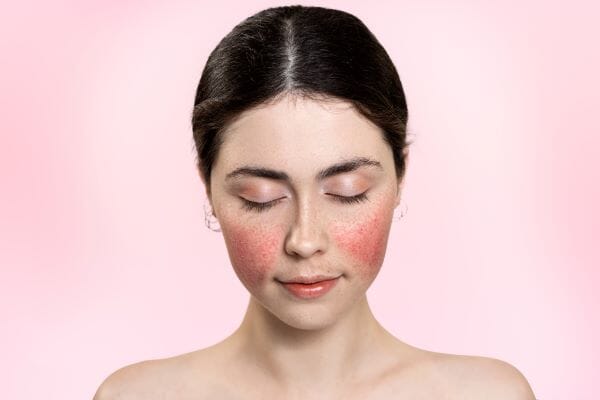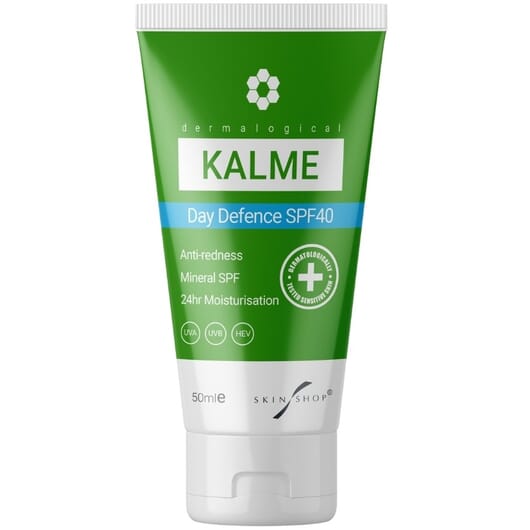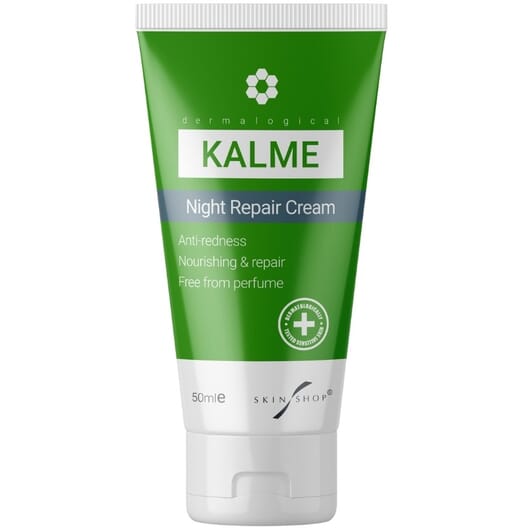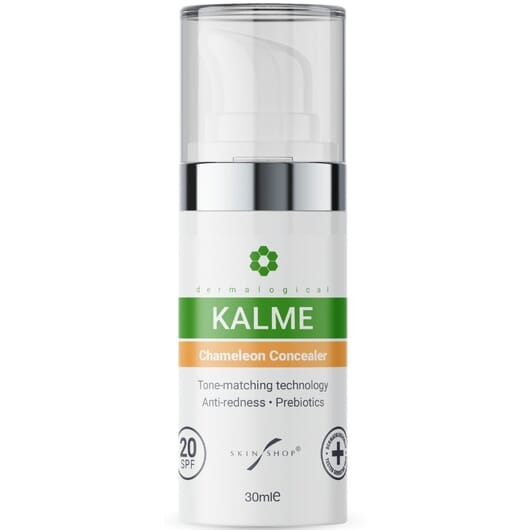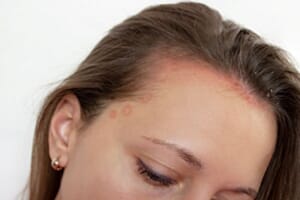Rosacea or acne rosacea is a skin condition that is caused by dilation of blood cells below the skin’s surface caused by an underlying inflammatory response. It’ the dilation of the blood cells that causes the typical flushing associated with rosacea and also eventually leads to leaking capillaries (thread veins). There's no definitive rosacea cure, although the condition can be managed usually with a combination of some limited medication, targetted skincare products and a strict and regular skincare routine.
However, its the inflammatory response elements know to be resposible for rosacea triggers that has lead researchers to link it to several other health conditions that are also triggered or linked to inflammation.
While its not known if a predisposition to rosacea is the primary link to other inflammatory health conditions or whether the other inflammatory health conditions are what trigger rosacea as a secondary condition is still unknown.
There is nevertheless a link between rosacea and certain common health conditions so if you suffer from one of the following six health conditions and also find you are getting frequently flushed and bumpy red cheeks, thread views and small itchy pustules on the cheeks and nose area you can probably assume that your skin condition is rosacea.
-
Hay fever
Ocular rosacea that does not have other symptoms of rosacea is often misdiagnosed as allergies or hay fever. Yet in 20% of people with rosacea, ocular signs are the first indication of the condition

Ocular rosacea is characterized by foreign-body sensation in the eye, burning, stinging, itchy eyes; ocular photosensitivity (light sensitivity); blurred vision, telangiectasia of the sclera or other parts of the eye, or periorbital edema.
However, to complicate matters people who suffer from hay fever or allergies are more likely to also suffer from rosacea as well. The two conditions require different treatments so it’s important to get diagnosed properly.
-
Cystitis
A recent study on 65 people with rosacea at Johns Hopkins University and published in the American Academy of Dermatology identified associations between rosacea and urogenital diseases such as urinary tract infection (cystitis).

The researchers concluded that it was likely that the connection between rosacea and cystitis involves mechanisms that underlie chronic inflammatory conditions coupled with barrier skin tissues issues.
-
Acid Indigestion
Many studies show that rosacea is linked to acid indigestion, which may be linked to an underlying inflammation of the stomach lining.
The most common cause of acid indigestion is low stomach acid production (Hypochlorhydria)and studies show that a significant amount of people with rosacea also have hypochlorhydria.

At the top of the stomach (a muscular bag) there is a ring muscle called the lower oesophageal sphincter (LES). It opens to allow food in via the oesophagus (food pipe) and closes when the stomach is full and very acidic. The acidity is thought to be a trigger for this muscle to shut.
If the lower oesophageal sphincter is open, even a little, the food mass backs up into the oesophagus and cause a burning sensation which is known as acid reflux. Hydrochloric acid (human stomach acid) is a very strong acid and would burn normal skin if applied directly.
However, for digestion, controlling of bacteria and absorption of essential vitamins from food, Hydrochloric Acid is really important. Hydrochloric Acid stimulates the release of an exclusive carrier protein necessary for the transportation of vitamin B12 which is crucial for brain and nervous system function as well as the formation of red blood cells.
Insufficient stomach acid results in reduced absorption of vitamin B12.
This may be why rosacea sufferers commonly experiences anxiety, depression and fatigue which may all be due to vitamin B12 deficiency from their acid reflux.
-
Celiac disease
Rosacea has a significant association with celiac disease (wheat intolerance)
Researchers in Denmark conducted a population-based, case-control study of 6,759 patients with rosacea.

Women with rosacea on the study were found to have a significant association with celiac disease. This may be dure to an underlying inflammation of the stomach lining that causes sensitivity to wheat-based products.
-
Diabetes
Research published in the European Journal of Dermatology found a possible relationship between rosacea and insulin resistance – a metabolic disorder that may be a precursor to diabetes – as well as between rosacea and some elements of metabolic syndrome. The researchers noted that rosacea and metabolic disorders appear to have similar pathogenic pathways.
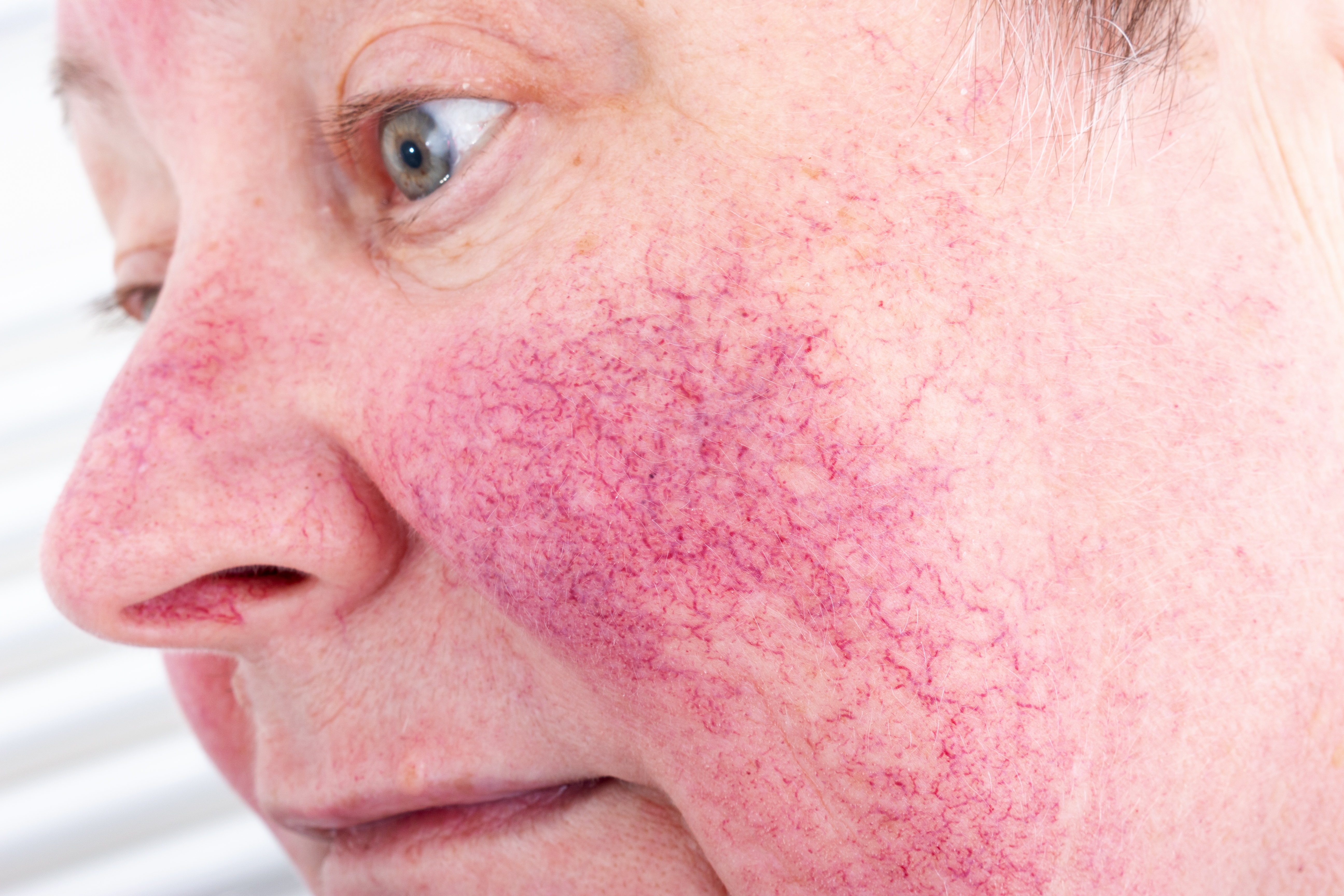
Metabolic syndrome is related to an increased risk of type 2 diabetes. Insulin resistance was calculated according to a standard method that compares insulin and glucose levels in the blood. The researchers measured these physical parameters and others in 47 rosacea patients and 50 individuals without rosacea. The investigators found that rosacea patients were significantly more likely to have insulin resistance.
The researchers suggested that the potential association between rosacea and insulin resistance may be explained by the fact that increased cathelicidin levels, inflammatory cytokines and oxidative stress are present during the pathogenesis of both rosacea and insulin resistance.
-
Arthritis
Most people don't associate skin conditions with arthritis, but in fact, the skin is one of the organs commonly affected by rheumatoid arthritis (RA).

RA can cause inflammation of the blood vessels in the skin which is what is likely to be the link between RA and rosacea.
A Danish study at the University of Copenhagen, also found that there may be a genetic link between rosacea and autoimmune diseases including RA.
Rosacea occurs more than three times more often in women than men, which is a similar ratio seen in people with RA. The University of Copenhagen study found that women with rosacea were more than twice as likely to have a concurrent autoimmune disorder like RA than their rosacea-free counterparts.
Aside from a genetic autoimmune link, one of the researchers from the Danish study also suggested that there was is a good chance that some of the association between rosacea and RA was due to medication. TNF-inhibitors and oral corticosteroids are used to treat RA, and both have been associated with rosacea development.



